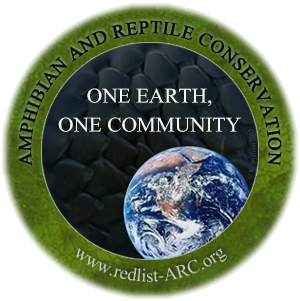|
PREPARATION, FORMAT,
SUBMISSION
Submission checklist send
to [email protected]
1. Manuscript with lists of figures/photographs
and tables at end
2. Figures and
photographs
3. Tables
4. Provide three recommended
referees
6. Copyright
Agreement
TITLE PAGE
Title of article:
The title of the article should be brief and describe the content of the article. If a
particular species is written include the publisher of the original description. If a
higher taxonomic group is written no reference is needed. Common names of species are included
in the title at the authors discretion.
Full names,
institutional addresses and email addresses for all authors. Label the corresponding
author
ABSTRACT
The Abstract of
the manuscript should not exceed 350 words and must be structured as background, significance,
methods, results, conclusions, summary.
Six to ten
keywords should be given. These should not include words in the title.
INTRODUCTION
The introduction
needs to be accessible to those without specialist knowledge in the field. The introduction
must clearly state the background of the research and its aims and hypothesis. The
section should end with a brief statement of what is being reported in the
article.
METHODS
Describe in
detail the experimental design including the any animals used and their providence and
housing, genbak information for genetics, full description of source of materials used, what is
being tested and how it is assessed, statistical models.
USE OF
STATISTICS
Describe the statistics used including in which experiment
each type of analysis was used and its use for that
data.
RESULTS
The Results and
Discussion may be combined into a single section or presented separately. In either case clearly
state the results of each experiment in a scientific form.
DISCUSSION
The discussion needs to relate the results of the
study to the topics and hypothesis in the introduction and perhaps methods. In the discussion
results should be rounded off to make reading easier. ie. 67 ± 2% expressed as â¼65%, and 33 ±
7% as â¼35%
CONCLUSION
This should state
clearly the main conclusions of the research and give a clear explanation of their importance and
relevance. Summary illustrations may be included. Future directions to further the research field
may be suggested. The length should be from 100 to 300 words.
OTHER
INFORMATION
Authors' information
-
short biographies and pictures
It is
generally appropriate to include an author short biography and author
photograph depicting the author in his normal work environment. This section of
the paper is to be listed at the end of the paper (for examples, see recent publications
from the journal).
You may choose to use this section to include
any relevant information about the author(s) that may aid the reader's interpretation of the
article, and understand the background of the author(s). This may include details about
the authors' qualifications, current positions they hold at institutions or societies, or any
other relevant information.
FORMAT
Images
Images for the article should be submitted in as high a quality as jpg, giff, or
tiff, and should not exceed a file size of 4
MB.
Image of authors, for authors bios, should be
approximately 300 x 450 pixels whether horizontal of vertical.
List of abbreviations
Abbreviations
should be defined in the text at first use. If a term is only used a few times in the article do
not use abbreviations.
Common and
Scientific Names
Use the common
name with scientific name only once when the species is introduced or infrequently. The common name
should only have proper names such as cities or locations or peoples or entities names with a
capital. ie. Pearsons desert rat, green anole, Sydney funnel web spider, elephant, Polar
bear.
REFERENCE
FORMAT
For EndNote users, a reference template for Amphibian
and Reptile Conservation is available [here].
(Windows users:
right click and "Save target as." Mac users: control + click and "Save linked file as." Make sure
final file name is ARC.ens with no .txt file extension.)
1) For articles authors and article dates; alphabetical by surname of first author and et al. for
many authors should be cited in the manuscript. In-text citations should be within brackets.
References should be separated by semicolons and should not italicize “et al.” Citations by the
same authors in the same year should be given a lowercase letter after the
year (example: Stow and Sunnucks
2004a,b) and repeated author names within the same in-text
citation should be omitted (example: Emlen 1994,
1997).
References can be placed in alphabetical order
of first authors surnames, then by the least recent date
Example: (Ané et al. 2007; Emlen 1994, 1997; Hey 2011; Lemos-Espinal et al. 1997; Omland
1999; Pagel and Meade 2006; Storey 2006; Stow and Sunnucks 2004a,b; Wiens et al.
2008)
Alternatively, references to a historic
theme may be ordered by the most recent date then in alphabetical order of first authors
surnames.
Example: (Castoe and
Parkinson 2006; Knight et al. 1992; Kraus et al. 1996; Malhotra et al. 2010; Parkinson 1999;
Parkinson et al. 1997, 2002)
2) For articles
with a very large number of references, authors may number references consecutively to correspond
with their order of use in the reference list. In this case, in-text citations should still be in
parentheses and use number ranges for consecutive citations (1-3; 8).
Note:
Only articles and
abstracts that have been published, are in press, or are available through public
e-print/preprint servers, may be cited.
Unpublished
abstracts, unpublished data, and personal communications should not be included in the reference
list, but these citations may be included in the text and referred to as "data not shown" or "pers.
comm." giving the first initial and surname of involved researchers (J. Smith, pers.
comm.).
Obtaining
permission to quote personal communications and unpublished data from the cited colleagues is the
responsibility of the authors.
Citations in the
reference list should include all named authors, up to the first 9 and also including the
final author to make 10, before abbreviating with et al.
Any "in press"
articles cited must be provided if requested by the editorial
office.
Internet links,
including links to the authors' own websites, should be referenced in the reference list.
Links should be provided in full, including the title of the site and page, the URL of the page,
and the date accessed. ie.
Links and URLS
Link / URL: The Mouse Tumor Biology Database. [Online].
Available: http://tumor.informatics.jax.org/mtbwi/index.do [Accessed: 12 September 2011].
Link / URL with
author : Roth M. 2011. Experts identify world's most
threatened sea turtle populations. [Online]. Available:
http://www.iucn.org/?8331/Experts-Identify-Worlds-Most-Threatened-Sea-Turtle-Populations
[Accessed 3 October 2011].
Link / URL for
newsletter: Janzen P. 2010. Cooperative breeding of
amphibians by zoos and private herpetologists in the “German speaking area”. AArk Newsletter
(March 2010). [Online]. Available:
http://www.amphibianark.org/Newsletters/pdf_newsletters/amphibian%20ark%20news%2010.pdf
[Accessed: 14 October 2011].
Article within a
journal:
Wiens JJ, Kuczynski CA, Smith SA, Mulcahy DG,
Sites JW, Townsend TM, Reeder TW. 2008. Branch lengths, support, and congruence: Testing the
phylogenomic approach with 20 nuclear loci in snakes.Systematic
Biology 57(3):420-431.
Article within a journal
supplement
Orengo CA, Bray
JE, Hubbard T, LoConte L, Sillitoe I. 1999. Analysis and assessment of ab initio three-dimensional
prediction, secondary structure, and contacts prediction.Proteins 43(Suppl
3):149-170.
In press
article
Hey J. 2011. Isolation with migration models
for more than two populations.Molecular Biology and Evolution,
in press.
Published
abstract
Zvaifler NJ,
Burger JA, Marinova-Mutafchieva L, Taylor P, Maini RN. 1999. Mesenchymal cells, stromal derived
factor-1 and rheumatoid arthritis [abstract].Arthritis
& Rheumatism 42:s250.
Article
within conference proceedings
Jones X. 1996.
Zeolites and synthetic mechanisms. In Proceedings of
the First National Conference on Porous Sieves: 27-30 June 1996;
Baltimore. Editor. SY Stoneham.
Butterworth-Heinemann. 16-27.
Book
chapter, or article within a book
Emlen ST. 1997. Predicting family dynamics in
social vertebrates. InBehavioural Ecology: An Evolutionary Approach. Editors. JR Krebs, NB Davies. Oxford, Wiley-Blackwell.
228-253.
Whole
issue of journal
Ponder B,
Johnston S, Chodosh L. 1998. Innovative oncology. InBreast
Cancer Research.
Whole
conference proceedings
Smith Y.
1996.Proceedings of the First National Conference on Porous
Sieves: 27-30 June 1996; Baltimore.
Butterworth-Heinemann.
Complete
book
Krause J, Ruxton GD.
2002. Living in
Groups. Oxford University Press. Oxford,
UK.
Monograph or
book in a series
Hunninghake GW,
Gadek JE. 1995. The alveolar macrophage. InCultured Human
Cells and Tissues. Editor. TJR Harris. New York, Academic
Press. 54-56. [G Stoner, Series Editor: Methods and
Perspectives in Cell Biology, Vol
1.]
Book with institutional
author
Advisory
Committee on Genetic Modification. 1995.Annual
Report. London.
Ph.D.
thesis
Davis AR. 2009.
Kin dynamics and adaptive benefits of social aggregation in the Desert Night
Lizard,Xantusia vigilis.Ph.D.
Dissertation, University of California, Santa Cruz,
Department of Ecology and Evolutionary Biology.
M.S.
Thesis
Ricards JJ. 1961. Variation and biogeography
of the western ground snake,Sonora semiannulata Baird.M.S. Thesis, Arizona State
University, Tempe, Arizona, Department of Biology.
|


